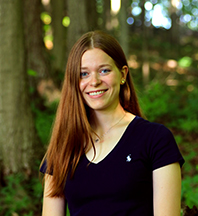Week of October 9, 2022 – October 15, 2022

by Elizabeth Suzedell, Environmental Educator
The Aurora Borealis, or the Northern Lights, is perhaps the most magical sight we can see in the sky from here on Earth. An aurora is a beautiful show of dancing, colorful light that is seen at night near the earth’s poles. While it’s rare in Central New York, the aurora is still seen here every so often. In order to understand how the northern lights happen, we need to look to the sun.
The sun is our closest star which gives us our light and heat. It is a giant ball of hot gas with a huge amount of energy. The sun is constantly releasing charged particles called ions into space through its “solar wind.” Sometimes, the sun releases a large amount of particles and energy right towards Earth through an explosion called a Coronal Mass Ejection (CME).
Around our planet, we have a strong magnetic field which deflects much of the charged particles from the sun’s solar wind. During the stronger CMEs, some of the particles can make it into the earth’s upper atmosphere. When these particles react with gasses like nitrogen and oxygen, bright green, red, and even blue and purple light can appear, giving us the northern lights.
Typically, the aurora borealis is seen close to the arctic circle, which is over 1,500 miles away to our north. It isn’t easy to see the northern lights in Central New York, but it’s possible during a particularly strong solar storm, or CME. Listen for news about increased solar storm activity, and you may be able to catch this spectacular phenomenon right from home!
For more information about space weather, visit the Space Weather Prediction Center at: www.swpc.noaa.gov/

